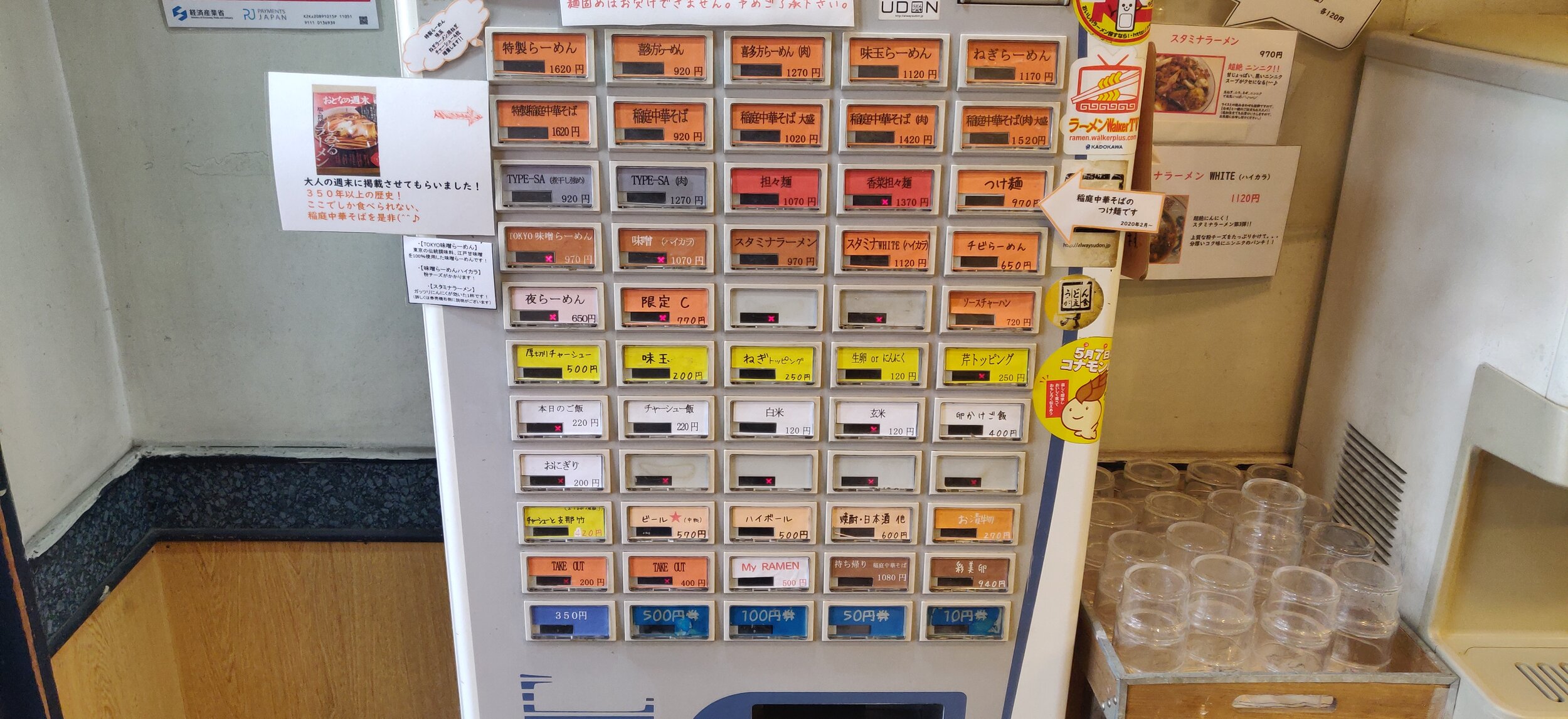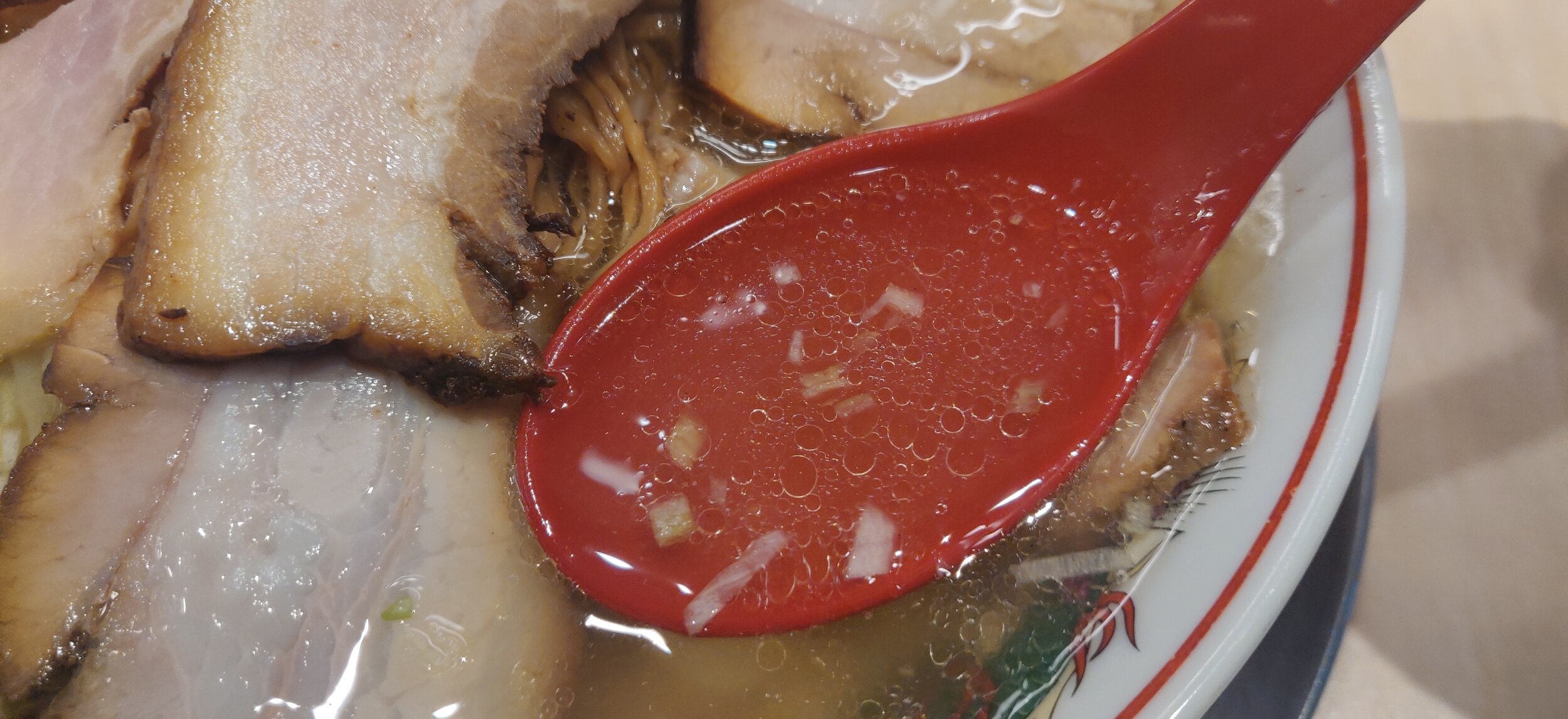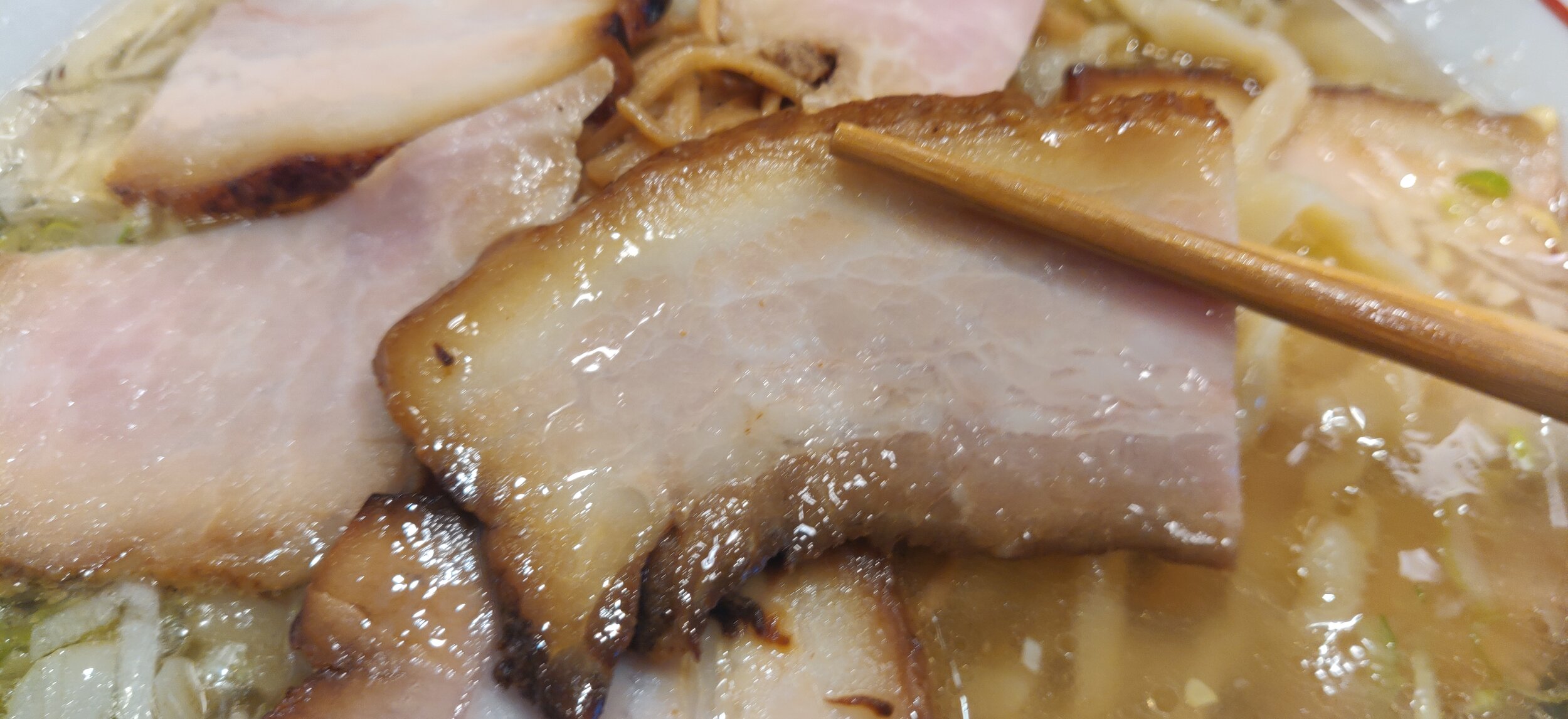Shokudo Shichisai (食堂 七彩); Tokyo’s Premier Kitakata Ramen Shop, Toritsu Kasei
Calling Shokudo Shichisai a ramen institution would be an understatement as it is probably one of the most legendary and well respected shops in all of Tokyo, but without the fancy magazine appearances and glitzy awards, you probably have never heard of them until this article. Masters at some of your favorite shops like Menya Shichisai, Jyunteuchi Daruma, and Kujira Shokudo have all called Shokudo Shichisai home before branching off and opening restaurants of their own. Located near Toritsu Kasei station on the Seibu Shinjuku train line, the shop is in an auspicious building at the end of a dingy shoten-gai market street and in no way would you think this as the training grounds for so many famous, ramen masters. Open Wednesday-Monday 11:30-15:00 for lunch and 18:00-24:00 for dinner on weekdays and 18:00-22:00 on weekends, Shokudo Shichisai is a must visit for any ramen fanatic interested in seeing the origins of where many of the top Tokyo ramen shops’ flavors comes from as well as get a bowl of Kitakata ramen as close to the flavors in Kitakata without stepping foot in a Shinkansen. Shop is closed on Tuesdays and will sometime shut on long holidays so please plan accordingly (I’ve been here 5 times and have been turned away by a shuttered door twice as they had closed for a holiday).
Unfortunately the shop doesn’t attract a ton of foreign customers so the machine is all in Japanese. I’ll do my best to translate the menu here, but the shop tends to offer a ton of seasonal specials and is know to change their menu frequently so be warned that it may have changed by the time you get here. First row is the regular Kitakata style ramen which is technically their bread and butter, but has since created so many special gentei items that people forget this exist. For first timers here, I highly recommend getting the Kitakata. Shokudo Shichisai’s bowl is what inspired those served at the aforementioned, trained chefs and is where you’ll get the best, first experience. Starting at the left is the Tokusei version with extra toppings, followed by the regular ramen, Kitakata style with extra pork chashu, with an Ajitama, and finally with extra negi. Second row is their clean, shoyu ramen starting with the Tokusei, then regular, next is with extra noodles, then extra pork chashu, and finally large noodles as well as the pork chashu. Third row is where it gets a bit tricky where they have various genteis which essentially became regular menu items. The Type SA is a heavy Niboshi ramen and next to it is the SA with extra pork chashu. The red button is for Tantanmen and extra spicy version with a Tsukemen on the very end. Fifth row also includes favorites from regulars with a Miso Ramen options in the brown on the left, a Stamina spicy ramen options, and finally a small ramen for kids on the far right. Next row is all specialty options so check the posters to see what it is during your visit. Next row in yellow are toppings with extra pork chashu, ajitama soft boiled egg, negi, ginger or garlic, and a specialty topping. White buttons are rice bowls starting with today’s rice special, chashu over rice, white rice, brown rice, raw egg over rice, and an onigiri option in the row below. Next row starting with the yellow is for even more pork chashu, than the drinks which start with beer, then a whisky highball, shochu or nihonshu, and the far right is for appetizers. Next two rows are go take out and just when the specials need to charge an extra bit of cash along with an already programmed menu button so no need to worry unless instructed to do so. My order for the day was the Kitakata Ramen with the extra pork chashu.
So I’ve actually been here before and if you browse through some of my old instagram photos, you might see that I ordered one of their specialty gentei items the last time I went. I needed to make a repeat visit to write this review as I didn’t have any proper photos of what made them famous, their Kitakata ramen. So without further ado, here is my review for their famous Kitakata ramen. Before I get in to it, I should probably preface this review with a brief background on this style. Kitakata ramen originates in an area called….Kitakata up north in Fukushima prefecture. The style is characterized by hand made, massaged noodles in a light tonkotsu, chicken, and niboshi based broth. Tare can be either Shoyu or Shio, really based on preference and the main visual star is the generous cuts of pork chashu. In Kitakata, this bowl will usually run less than a 1000 yen, so it does feel like I got a Tokyo tax put on me here at Shokudo Shichisai, but I guess I can’t complain too much as this is the closest to the real thing I can get and I don’t have to catch an expensive Shinkansen to do so.
Visually the ramen is breathtaking and the extra money I spent on getting the pork chashu add on was worth every penny. I was asked if I wanted Shio or Shoyu and since I was hesitant in my answer, the master told me he likes the Shio better so I went with his preference. I’ve only ever been to Kitakata once, and only tried a couple bowls up there, but I have to say, it was just like I remembered. The light, delicate soup is brimming with flavor with a solid animal stock base helping uplift the umami enriched niboshi elements. Shio was undoubtedly the right call and it helped elevate the soup beautifully without interfering in anyway. Aroma oil is infused with the negi, which is used as a topping for the ramen, and these subtle aromatics made all the difference it upping the savoriness of the soup. The combination of the broth, Shio tare, and aroma oil is perfectly balanced and created a delicious soup that was hard not to stop drinking. I hadn’t even touched my noodles at this point and was having a hard time not just drinking the soup.
Even with how great the soup is, the noodles and pork chashu is not overlooked and was incredibly good as well. First off the noodles are just like up in Kitakata and have the familiar hand massaged texture and flour aroma. Made on site daily, the noodles have a fantastic profile and recipe which has been replicated by his former disciples and is essentially why shops like Menya Shichisai and Kujira Shokudo became so popular. The allow for high hydration noodles with interesting textures helping to cling more soup to the strands than normal. And they do exactly that with every slurp carrying a satisfying amount of soup to my mouth and it ensure that every bite is as flavorful as the last. Pork chashu is also amazing with a slight braised char around the edges giving the slices a hypnotizing smoky aroma and great flavor levels. The shoyu marinade soaks in deep, but also leave the middle as is for a nice flavor contrast. Cut cold, and then warmed in the residual heat of the soup, I thoroughly recommend getting the extra pork slices. These small thin slices of menma bamboo shoots was a nice nostalgic touch and provided some texture contrast with the soft noodles and chewy meat.
I’ve been to Kujira Shokudo, Menya Shichisai, and Jyunteuchi Daruma prior to my visit here and came away from those shops thinking it was top tier Kitakata ramen for Tokyo. After dining at Shokudo Shichisai, I came away thinking, this could be one of the best in Japan. Honestly, it was that good, and it blows his disciples out the water with how delicious his soup is. If you’ve ever been to any of the three shops, but haven’t yet made it to Shokudo Shichisai, I wholeheartedly recommend making your way there. I guarantee you won’t regret it, and you’ll be in for one of the most fantastic bowls of Kitatakata ramen of your life…even more so if you’ve never actually been to the source. If you’re looking for more ramen shop recommendations, please check out my ramen shop guide eBook with all the information you need to get in to 15 of the best ramen shops in Tokyo! Thanks for your support and thank you for reading my reviews!






